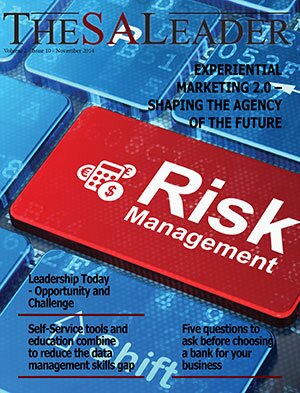As a leadership coach, I have worked with blue chip organisations such as Liberty, Auditor General, SA Reserve Bank, Multichoice, Old Mutual, The Council for Geoscience and Medscheme, all of who realise the value in acquiring and nurturing leadership skills to survive and thrive in the South African context.
We live and trade in a progressively fast-paced and evolving environment in South Africa - whether dealing with the tightening economy and political macro-environment, striving for expansion, dealing with strike action, staff retrenchments or acquisitions, we are in a constant state of change and are left with no choice but to adopt drastic change an innovation to survive. This environment gives rise to challenges and opportunities that drive us to innovate by taking advantage of the rapid speed of change. To excel in today’s business climate, it is imperative for leaders to consider their approach differently than they have in the past – over and above the traditional strengths, it calls for being charismatic, dependable, credible and capable of positively influencing others to willingly support them.
Research reveals that there is a gap in the market for effective change leadership skills. According to a leadership study conducted by the Centre for Creative Leadership (CCL) there is a distinct gap in change leadership skills throughout the U.S, Singapore and India. Leadership is undoubtedly, contextual. As an emerging economy, South African leaders need to create and cultivate a leadership from which future generations can optimise their potential.
Change starts at the top
It’s up to leaders to spearhead the process for positive change and put in place systems that ensure that staff at each level have the appropriate capabilities, skills and information in place to move with and support the change.
Effective change leadership requires the skill to navigate a business and it’s people smoothly through transition to a positive outcome. If leaders don’t set a positive example of commitment to improvement and being employee centric, transition will collapse due to a lack of support.
Everybody talks about managing change, however if you take a closer look at the tools many businesses are using, all they’re effectively doing is pushing things along, trying to minimise disruption and keep things under control. Leading change is more than minimising the impact of change. Change leadership is the drive to make something better happen. It’s big visions, big leaps, taking advantage of instant opportunities and empowering masses of people to change for the better. Change leadership in itself has the potential to get things a little bit out of control. Shake it up, make room for the new, innovate, evolve and have the systems and communications in place to support the journey.
Balance the basics
Make balanced decisions and understand the consequences and risks of your decisions. Take calculated risks but avoid a gamble. Reactive kneejerk-type actions can be highly destructive change to an organisation – from both a client and employee perspective. Ensure that not too much change happens simultaneously. Keep as many basic-day-to-day procedures balanced and constant to ensure that the degree of change felt is not overwhelming. It really is a balancing act between keeping the basics in check while making the necessary changes to move forward.
Communicate strength
With so much change and ambiguity in South Africa’s business landscape, it is natural for stakeholders and employees to sometimes feel concerned and slip into negative talk and expectations. Lack of positive communication during ardent times can easily lead to lack of trust and motivation and give rise to negative rumors and poor employee engagement. It is critical for business leaders to foster an open dialogue across the organisation, especially during uncertain times. Leaders should embrace changes and challenges and outline the steps the business plans to take to traverse the change. It’s also vital to ask your staff for support and input to ensure buy-in and open channels of communication.
Power in the people
Few can dispute that any business’s most valuable asset is its people. Build rapport, always be sincere with your staff, be approachable and invest quality time and genuine interest in your employees. To be a great leader it is a non-negotiable to be people-centric and be seen to nurture trust and mutual respect. Remember that corporate change is also fundamentally transforming the lives of your employees, so instil a compelling sense of self-belief and place real worth in your people in order for them to be part of reaching your transformation goals.















